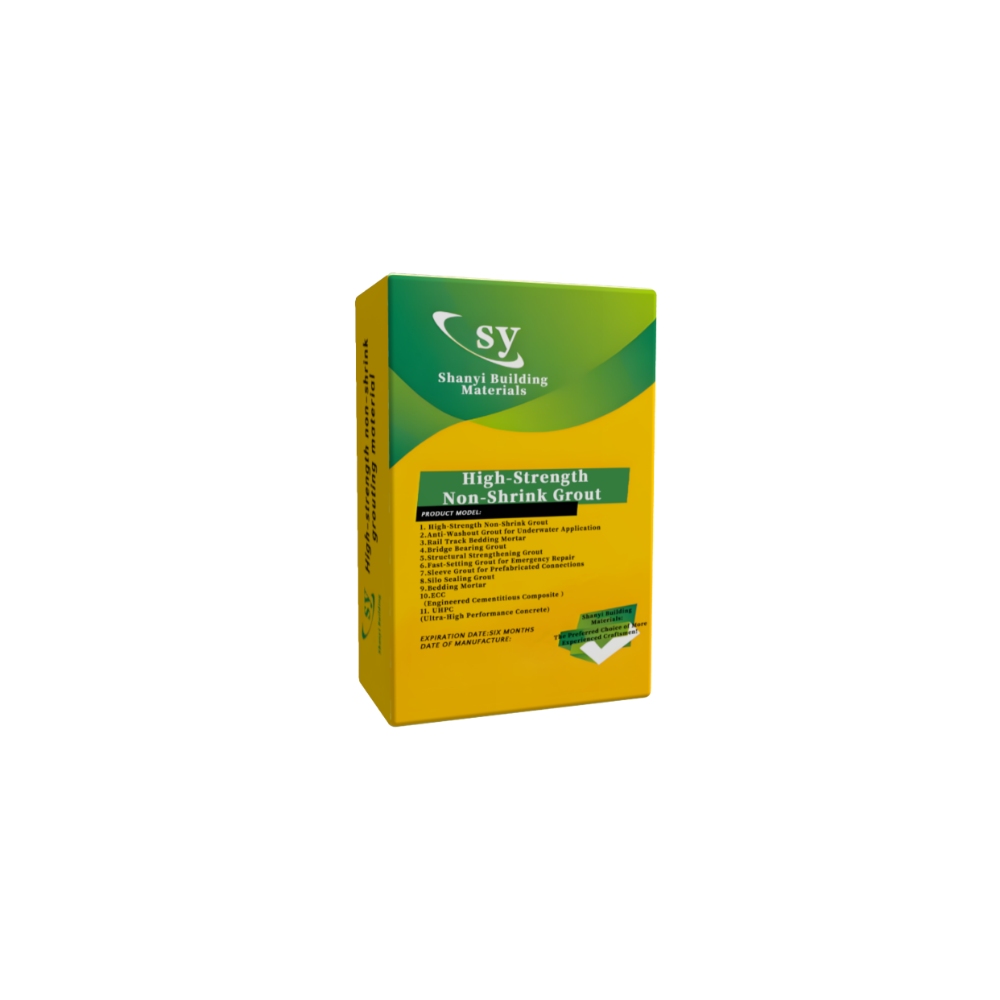https://www.shanyijc.com/engineered-cementitious-composites.html
Concrete has been the backbone of modern infrastructure for more than a century, but its greatest weakness has always been its brittleness. Cracks appear early, water seeps in, steel corrodes, and structures that should have lasted decades require repair within years. Engineers have long searched for a material that combines the strength of concrete with the flexibility of steel. That search led to the development of engineered cementitious composite (ECC) — a new class of high-performance materials designed to overcome the limitations of traditional concrete.

Wuxi Shanyi New Building Materials Co., Ltd. specializes in advanced engineered cementitious composite (ECC) materials that are engineered for durability, ductility, and sustainability. Unlike conventional concrete that fails suddenly when overloaded, this composite bends and stretches under stress, maintaining structural integrity and preventing catastrophic damage. The result is a material that lasts up to three times longer in service life while reducing maintenance and environmental impact.
From Brittle to Ductile: The Science of Engineered Cementitious Composite (ECC)
Traditional concrete has a tensile strain capacity of only about 0.01%, meaning it cracks easily when pulled or bent. The engineered cementitious composite (ECC), by contrast, can sustain tensile strains between 2% and 5%, making it more than 200 times more flexible. This remarkable property comes from the careful design of its microstructure. Instead of relying on coarse aggregates, the material uses a fine mortar matrix reinforced with specially selected polyvinyl alcohol (PVA) or polyethylene fibers.
These fibers bridge microscopic cracks as they form, distributing stress evenly and preventing a single crack from expanding into a large fracture. The result is a dense network of fine, hairline cracks—typically less than 100 microns wide—so small that water and harmful ions cannot penetrate. This controlled cracking mechanism allows ECC to deform without losing load-bearing capacity, ensuring that the structure remains safe and serviceable even under high stress, impact, or seismic loads.
Built to Endure: Three Times the Lifespan
The extended life of engineered cementitious composite (ECC) structures comes from a combination of self-healing, crack control, and chemical resistance.
-
Self-Healing Mechanism: When exposed to water or humidity, unhydrated cement particles and calcium carbonate precipitate in the microcracks, naturally sealing them. Laboratory studies have shown that engineered cementitious composite (ECC) can recover watertightness after multiple wet-dry cycles—something conventional concrete cannot achieve without repair.
-
Crack Control and Durability: Because the composite limits crack widths to under 0.1 mm, it blocks chloride and sulfate ions, which are the main causes of steel reinforcement corrosion. This alone can extend the lifespan of reinforced structures by decades.
-
Resistance to Environmental Stress: The material maintains its mechanical performance under freeze-thaw, acid rain, and dynamic loading conditions far better than ordinary concrete. Field applications have shown minimal deterioration even after years in aggressive environments such as coastal bridges and wastewater facilities.
Performance Proven in the Field
Wuxi Shanyi’s engineered cementitious composite (ECC) materials have been applied in multiple demanding projects, including bridge decks, road overlays, tunnel linings, and structural joints, where fatigue and cracking are common challenges. In bridge deck rehabilitation, ECC overlays demonstrated zero delamination or spalling after years of heavy traffic. In tunnel linings exposed to groundwater seepage, the composite maintained tight crack widths and prevented leakage. Compared to traditional repair materials, maintenance intervals were extended from 5 years to more than 15 years—proving the claim that engineered cementitious composite (ECC) truly lasts three times longer than conventional concrete.
Additionally, this composite shows outstanding seismic resilience. In joint regions of buildings and bridges, its ductility allows structures to dissipate energy during earthquakes, reducing damage and repair costs. This makes ECC a preferred choice in regions prone to seismic activity.
Sustainability Through Strength
Durability is sustainability. By extending service life and minimizing maintenance, engineered cementitious composite (ECC) reduces the overall consumption of materials, energy, and carbon emissions throughout a structure’s lifecycle. It also allows for the use of industrial by-products such as fly ash and slag in its mix design, lowering cement content and further reducing CO₂ emissions. Structures built with this technology require fewer repairs, less downtime, and generate less construction waste over decades of service—contributing to a truly sustainable infrastructure solution.
Engineered by Wuxi Shanyi for the Future
Wuxi Shanyi New Building Materials Co., Ltd. is committed to advancing engineered cementitious composite (ECC) technology through rigorous research and field testing. Its engineered mixes are optimized for strength, ductility, and workability, allowing seamless integration into modern construction processes. Whether used for new builds or for rehabilitation of aging infrastructure, Shanyi’s engineered cementitious composite (ECC) delivers consistent quality, exceptional crack control, and long-term durability.
By combining scientific innovation with practical engineering, Wuxi Shanyi provides materials that redefine the expectations of concrete performance. Engineered cementitious composite (ECC) is not just stronger—it is smarter, safer, and more sustainable.
When it comes to infrastructure longevity, engineered cementitious composite (ECC) represents a generational leap forward. While ordinary concrete succumbs to cracking, corrosion, and environmental fatigue, ECC from Wuxi Shanyi New Building Materials Co., Ltd. stands firm—flexible yet unyielding, durable yet sustainable. In bridges, tunnels, and high-performance buildings, this innovative material extends service life by a factor of three, proving that the future of concrete is not just hard—it’s engineered.
https://www.shanyijc.com/engineered-cementitious-composites.html
Wuxi Shanyi New Building Materials Co., Ltd.